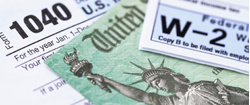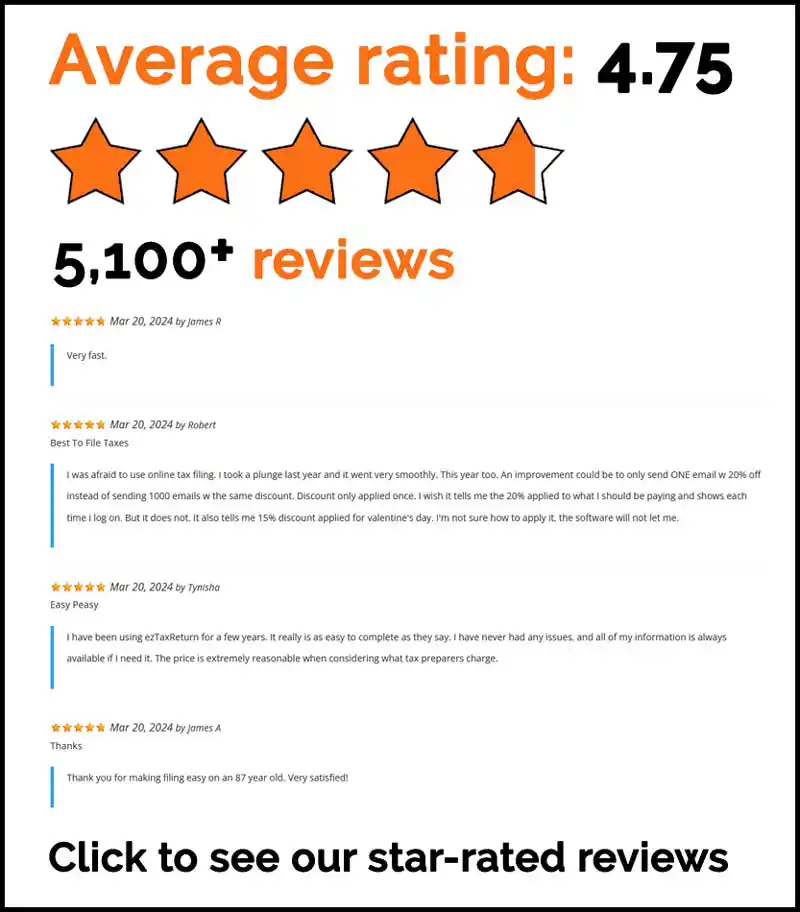The information in this article is up to date for tax year 2025 (returns filed in 2026).
If you work from home, you could be leaving money on the table when it comes to your taxes. The home office tax deduction is a great way to save big, but many people aren’t sure how to take advantage of it. Whether you’re self-employed or running a side hustle from your extra bedroom, this deduction can help reduce your taxable income by covering expenses related to your home office space. Here’s everything you need to know to make the most of the home office deduction and keep more cash in your pocket.
What is the Home Office Deduction?
The home office deduction is a tax break that allows self-employed individuals to deduct expenses related to a dedicated space in their home used for business purposes. This deduction, which is claimed on Schedule C, can include costs like mortgage interest, real estate taxes, and other home office expenses.
Eligibility for the Home Office Deduction
To be eligible for the home office deduction, you must be self-employed and use a dedicated space in your home regularly and exclusively for business purposes.
You must also meet the principal place of business test, which means your home office is your main place of business or a place where you conduct substantial administrative or management activities.
Employees who work from home are not eligible for the home office deduction, unless they are self-employed and meet the above requirements. Meeting these criteria ensures you qualify for the home office tax deduction.
Exclusive Use and Regular Use
Exclusive use and regular use are two essential requirements for qualifying for the home office deduction. Exclusive use means that the space used for business purposes must be used solely for business and not for personal activities. This can be a dedicated room or a section of a room, but it must be used only for business purposes.
Regular use, on the other hand, means that the space must be used for business purposes on a regular basis. There is no specific definition of regular use, but it generally means using the space for business purposes consistently and repeatedly. The IRS will consider the facts and circumstances of each case to determine if the space is used regularly for business purposes.
To meet the exclusive use requirement, you must be able to demonstrate that the space is used only for business purposes. This can be done by:
- Keeping a log or calendar of business use
- Taking photos or videos of the space
- Having a separate entrance or door for the business space
- Using a partition or divider to separate the business space from personal areas
To meet the regular use requirement, you must be able to demonstrate that the space is used consistently and repeatedly for business purposes. This can be done by:
- Keeping a log or calendar of business use
- Showing a pattern of regular business use over time
- Having a regular schedule of business activities
- Using the space for business purposes during regular business hours
By ensuring that your home office meets both the exclusive use and regular use requirements, you can confidently claim the home office deduction and maximize your tax savings.
Qualifying Home Office Space
- A qualifying home office space must be used regularly and exclusively for business purposes.
- The space can be a dedicated room or a portion of a room, but it must be used only for business.
- You can also deduct expenses related to a home office in a separate structure, such as a garage or shed.
Calculating the Home Office Deduction
There are two methods to calculate home office deductions: the simplified method and the actual expenses method.
The simplified method uses a prescribed rate of $5 per square foot of home office space, up to a maximum of 300 square feet or $1,500, making it easier to calculate. However, it may not provide the largest deduction.
The actual expenses method requires you to calculate the actual expenses related to the home office, such as mortgage interest, property taxes, insurance, and utilities. This method can provide a larger deduction, but it requires more record-keeping and calculation.
Some common home office expenses that can be deducted include:
- Mortgage interest
- Property taxes
- Insurance
- Utilities
- Repairs and maintenance
- Home office equipment and supplies
It’s essential to keep accurate records of your home office expenses, including receipts, invoices, and bank statements. You should also keep a log or calendar of business use to demonstrate the exclusive use and regular use requirements. By doing so, you can ensure that you are maximizing your deduction and reducing your taxable income effectively.
Let ezTaxReturn calculate your home office tax deduction. Start today!
Record Keeping and Documentation
- To take the home office deduction, you must keep accurate records and documentation of your home office expenses.
- This includes receipts, invoices, and bank statements that show the expenses related to your home office.
- You must also keep a record of the square footage of your home office space and the total square footage of your home.
How to Claim Home Office Deduction
To claim the home office deduction, self-employed individuals report it on Schedule C (Profit or Loss from Business) when filing Form 1040. Business owners and partners use Form 8829 (Expenses for Business Use of Your Home) to calculate and deduct eligible expenses. Using ezTaxReturn can simplify the process, guiding you through the forms and helping ensure you claim the maximum deduction allowed.
Things to Keep In Mind
There are several to keep in mind when claiming the home office tax deduction:
- Self-employment tax: The home office deduction can help reduce your self-employment tax liability, providing significant savings for self-employed individuals.
- Audit risk: Taking the home office deduction may increase the likelihood of an audit by the IRS. It’s crucial to maintain thorough documentation and ensure that you meet all eligibility requirements.
- Business use percentage: You must calculate the business use percentage of your home to determine the amount of the deduction. This involves dividing the square footage of your home office by the total square footage of your home.
- Simplified method: The simplified method can be used if it is easier to calculate the deduction. This method allows you to deduct $5 per square foot of home office space, up to a maximum of 300 square feet.
Claim your home office tax deduction now—file with ezTaxReturn!
Common Mistakes to Avoid
- One common mistake to avoid is not keeping accurate records and documentation of your home office expenses.
- Another mistake is not meeting the principal place of business test or the regular and exclusive use test.
- You should also avoid deducting expenses that are not related to your home office, such as personal expenses.
Conclusion
The home office deduction can be a valuable tax break for self-employed individuals who use a dedicated space in their home for business purposes. To take the deduction, you must meet the eligibility requirements and keep accurate records and documentation of your home office expenses. By understanding the home office deduction and how to calculate it, you can maximize your savings and reduce your tax liability.
Ready to save big with the home office tax deduction? File your taxes easily and securely with ezTaxReturn today!
Frequently Asked Questions
What is the home office tax deduction?
The home office deduction allows taxpayers who use part of their home regularly and exclusively for business to deduct expenses such as rent, utilities, and home maintenance.
Who qualifies for the home office deduction?
You must use a portion of your home exclusively for business and it must be your principal place of business or a place to meet clients, customers, or patients regularly.
What expenses can I deduct for a home office?
Deductible expenses may include rent or mortgage interest, utilities, homeowners insurance, repairs, office supplies, and a portion of depreciation.
How do I calculate the home office deduction?
There are two methods:
- Simplified method: $5 per square foot of your office (up to 300 sq. ft.)
- Regular method: Deduct a percentage of actual home expenses based on the square footage used for business.
Can I claim the home office deduction if I’m an employee?
For most employees, the deduction is no longer available due to tax law changes. It’s primarily for self-employed individuals, freelancers, and independent contractors.
Do I need to keep records for the home office deduction?
Yes. Keep records of your home expenses, square footage, and how you use your home for business. Documentation helps if the IRS requests verification.
Can I deduct a home office in addition to other business expenses?
Yes. You can still deduct other business expenses like supplies, software, and professional services in addition to the home office deduction.
What is the simplified vs. regular method for home office deduction?
- Simplified method: Easy calculation based on square footage.
- Regular method: More precise, calculates the business portion of actual expenses, often yielding a larger deduction.
Can I claim the home office deduction for a rented space?
Yes. Both homeowners and renters can claim the deduction if they meet IRS requirements for exclusive and regular business use.
Can I claim a home office if I work remotely for an employer?
Currently, employees cannot claim a home office deduction under federal law unless you are self-employed. Some states may allow it.
How can tax software help with the home office deduction?
Tax software like ezTaxReturn can guide you through eligibility, calculate the deduction using the best method, and ensure you document everything correctly to maximize savings.
The articles and content published on this blog are provided for informational purposes only. The information presented is not intended to be, and should not be taken as, legal, financial, or professional advice. Readers are advised to seek appropriate professional guidance and conduct their own due diligence before making any decisions based on the information provided.




